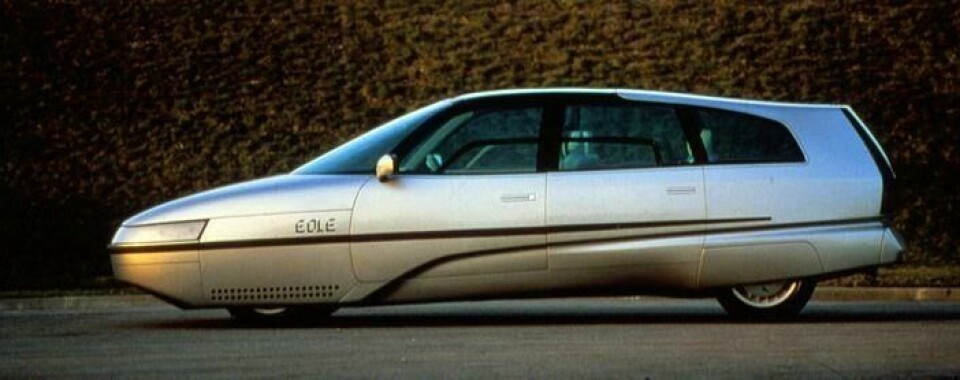
Concept Car of the Week: Citroën Eole (1986)
Introduced at the 1986 Geneva Motor Show, the Eole was a four-passenger luxury wagon based on the production CX. But while that car had its roots in the 1970s, the Eole was an exploration of where the genre might go in the next decade and beyond
The estate wagon is often seen as the humble workhorse of the automotive world, considered more for its function and overlooked as an inspired platform for stylistic or technological innovation. But in 1986 Citroën came forward with a bold concept that led to a re-evaluation of this time-worn belief.
Introduced at the 1986 Geneva Motor Show, the Eole was a four-passenger luxury wagon based on the production CX – Citroën’s very successful executive sedan and enormous, family-swallowing Safari model. But while that car had its roots in the 1970s, the Eole was an exploration of where the genre might go in the next decade and beyond.

The concept was designed to extend the conceptual, styling and engineering themes that informed the design of Robert Opron’s CX, a car with aerodynamics at its core (CX stands for coefficient of drag in French).
All four wheels were covered, the front spats linked to the car’s hydraulic system to lift them clear of the tyres as steering lock was applied. The front end was designed to present a minimal surface area to the wind, with the headlamps closely integrated into the car’s overall form.

The covered wheels contributed to an overall shape very close to the ideal Kamm profile, with a roof curved into an aerofoil shape and sharply cut off at the rear. The result was drag coefficient of 0.19Cd, less than half that of the CX, which was, in itself, a tour-de-force of automotive aerodynamics at the time.

The interior featured executive-class seats cantilevered off the centre console for a clean, uncluttered floor. The driver’s controls were ergonomically placed around the steering wheel, and moved with the wheel to ensured they were always within fingertip reach. While the passenger side of the IP featured an integrated video game, the highlight was a sharable audio system that housed the CD player and could be moved between occupants of the car’s cabin, or taken out of the car completely.

The concept was designed by Geoffrey Matthew at Chrysler UK (then owned by PSA Peugeot/Citroën), his drawings transferred to then-new computers for development. Designer Carl Olsen further developed the project for Citroën, and wrote of it on his website, some years later:
“The Eole was conceived at a time when Citroën had no new products to offer at international auto shows. I convinced the director to allow us to do a concept car which would be completely developed using automated processes so that it did not interfere with the production designs our modellers were building.
“The surfaces were developed full-size in the computer and then the body was milled on a five-axis milling machine. I believe it was the first car presented in public to be done this way. The initial theme was created by Geoff Matthew. Marketing did not like the car because it looked too much like a Citroën; it was their goal to kill the aesthetic traditions of the marque.
“It had a Cd of 0.19. The front wheel covers operated off the car’s hydraulic system. The interior was constructed in the standard way. I received a patent for the audio visual system, which was an electric track running through the central console that permitted the radio/CD/ tape player to be placed in multiple locations and to be used outside the car.”

The Eole was too advanced even by Citroën’s standards and the CX’s successor was the handsomely understated Bertone-design XM which slotted into the range above Gandini’s BX. While now gaining appreciation, at the time they were considered too conventional by die-hard fans.
One aspect that did see production however was its active suspension that lowered the car at speed to improve aerodynamics and cancelled out body roll in corners. This was in addition to Citroën’s already famous hydropneumatic suspension, and debuted on the production XM.

Perhaps the greatest legacy of the Eole was that it elevated the estate car from simple workhorse to design statement, with an interior that spoke of luxury rather than utility. Its designers also explored the largely unknown territory the computer-aided method which we take for granted as the way car design takes place today.




